Choosing the right shrub for your garden

Choosing the right shrub for your garden can be tricky, so in this blog, I talk about how to go about it.
Lets start with what is the definition of a shrub?
Gardeners classify plants as trees, shrubs, climbers, perennials, conifers, grasses, bedding plants, and bulbs. Traditionally, shrubs are usually considered smaller than trees, but this isn’t always the case.
The difference between a shrub and a tree is the stem/trunk. Trees have one trunk, and shrubs have multi stems, however this can get confusing with multi-stemmed trees and ‘standard’ shrubs such as the lollipop style of Bay trees.
First things to consider are, the situation, space, soil type and climate. Do you need an evergreen or is a deciduous ok for the space? Once you’ve worked out the basics, then it will whittle down the list of suitable shrubs for your plot.
If you have heavy clay soil for example, you may be able to grow your chosen shrub in a container, so all is not lost! I recommend using John Innes III compost in the pot.
With so many shrubs to choose from it can be overwhelming, so here’s a few suggestions for you to consider.
Nandina domestica
Grows in all soils in a sunny position and is ideal for a small garden as it doesn’t overpower the space as it only grows to around 1.5m tall. Its common name is heavenly bamboo because of its leaves rather than it’s spreading characteristics.
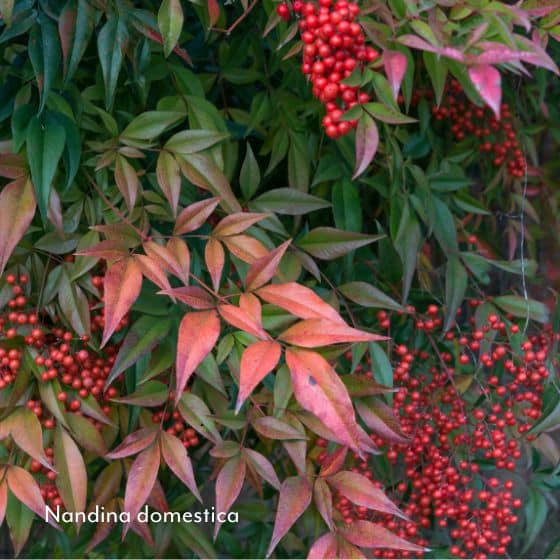
Fatsia japonica
Commonly known as the Castor Oil Plant. It has large glossy, deep green, leathery tropical-looking leaves which are evergreen. We have ours planted in a large container as they can get large. Here’s a photo I took at Spetchley Park in their walled gardens. You can’t tell how big it is in the first photo, but the second one provides context on the size – as you can see its as tall as the metal archway, so it’s taller than the average human!
Suitable for any aspect and any soil, however, they are susceptible to frost, and cold weather, so will need protection.
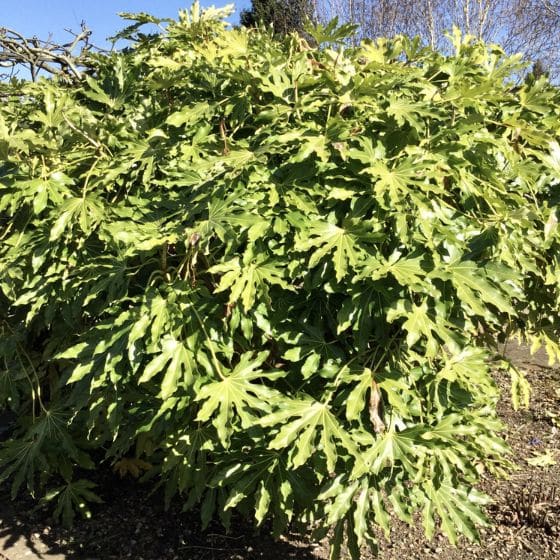
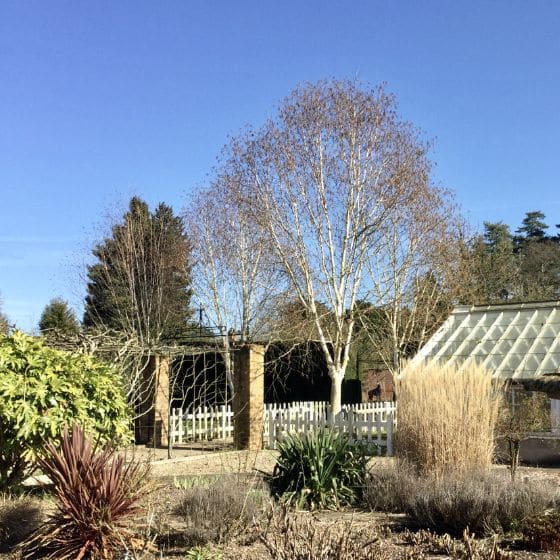
Autumn Colour
If you’re thinking about autumn colour, there are many shrubs that can provide beautiful autumn colour in the UK, depending on your preference and garden conditions. Some of the best shrubs for autumn colour are:
Cotinus: These are also known as smoke bushes, because of their fluffy flower clusters that resemble smoke. They have oval or round leaves that turn brilliant shades of red, orange, yellow, and purple in autumn. They can grow up to 5 metres tall and wide and prefer full sun and well-drained soil.
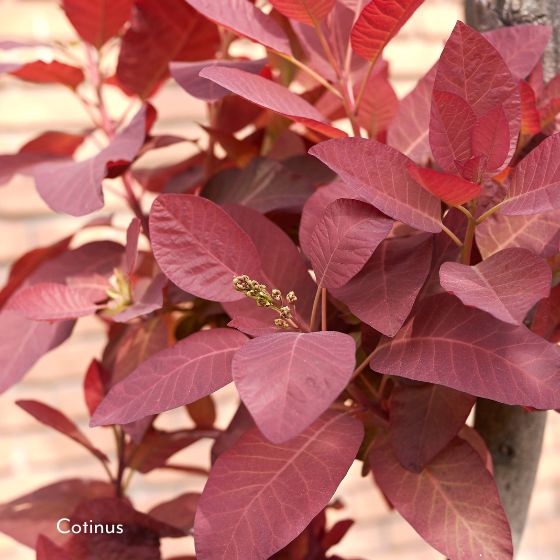
Euonymus: These are also known as spindle trees, because of their hard wood that was used to make spindles. They have small, inconspicuous flowers that are followed by colourful fruits and seeds. They also have attractive foliage that turns red, pink, yellow, or purple in autumn. They can grow up to 3 metres tall and wide and tolerate a range of soils and aspects.
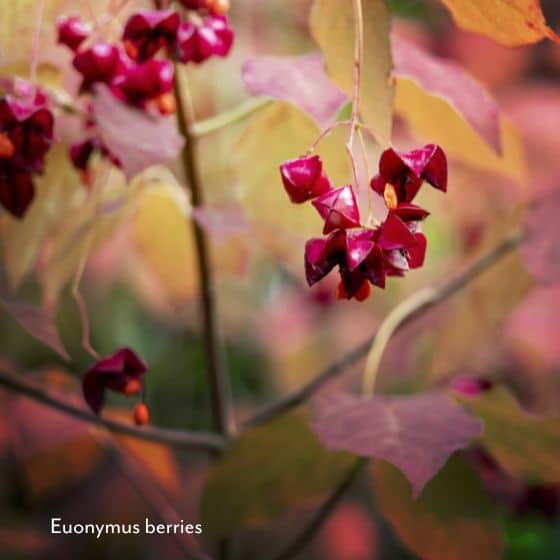
Hydrangea: These are popular shrubs that produce large clusters of flowers in summer, ranging from white to pink, blue, or purple. Some varieties also have stunning foliage that changes colour in autumn, such as Hydrangea quercifolia (oak-leaved hydrangea), which has lobed leaves that turn burgundy and bronze.
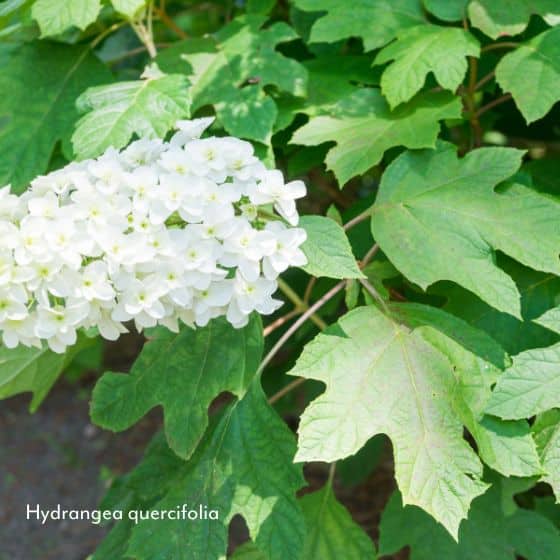
Callicarpa: These are also known as beauty berries, because of their striking purple berries that appear in autumn. They have small, pink or white flowers in summer, and oval leaves that turn yellow or purple in autumn. They can grow up to 3 metres tall and wide and prefer full sun or partial shade and moist soil. The berries should not be eaten and are harmful to dogs. It fruits best when grown in groups; at least two plants are needed to ensure pollination and berry production.
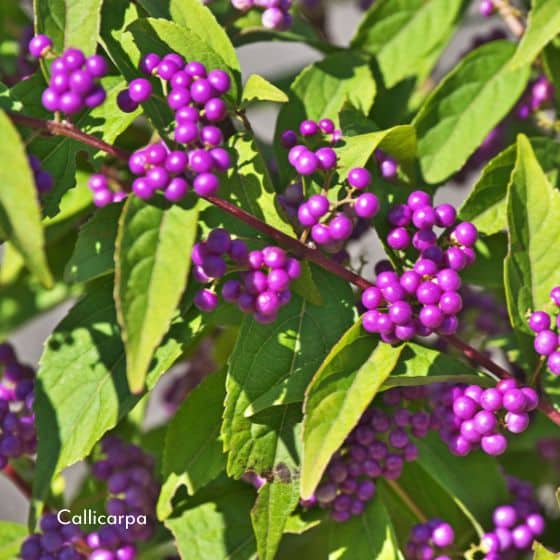
Viburnum: These are versatile shrubs that offer year-round interest with their flowers, fruits, and foliage. They have fragrant white or pink flowers in spring or summer, followed by red, blue, or black berries in autumn. They also have glossy green leaves that turn red or purple in autumn. They can grow up to 4 metres tall and wide and adapt to most soils and aspects.
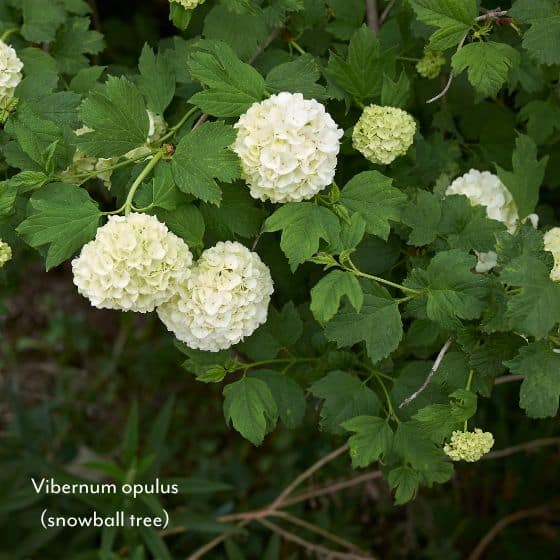
The Vibernum opulus is a deciduous shrub, but in spring it is smothered in white flower balls, hence the common name of the snowball tree. It can grow to around 5m tall but can be kept in check by pruning. Remove old or weak branches after flowering by removing it from the base.
Although I have provided a guidance on the size of these shrubs, it really depends on the growing conditions and variety of shrub as to whether the plants grow to or exceed this size. So, when you’re choosing a shrub and its in a 2L pot on the nursery shelf, it’s difficult to imagine how big it will get. Plus, you can cut back the bushes before they reach maturity and take over your garden. So my top tip is to buy the shrub you love!
 Free Delivery
Free Delivery Upgrade to 24 Hour Tracked Delivery
Upgrade to 24 Hour Tracked Delivery

